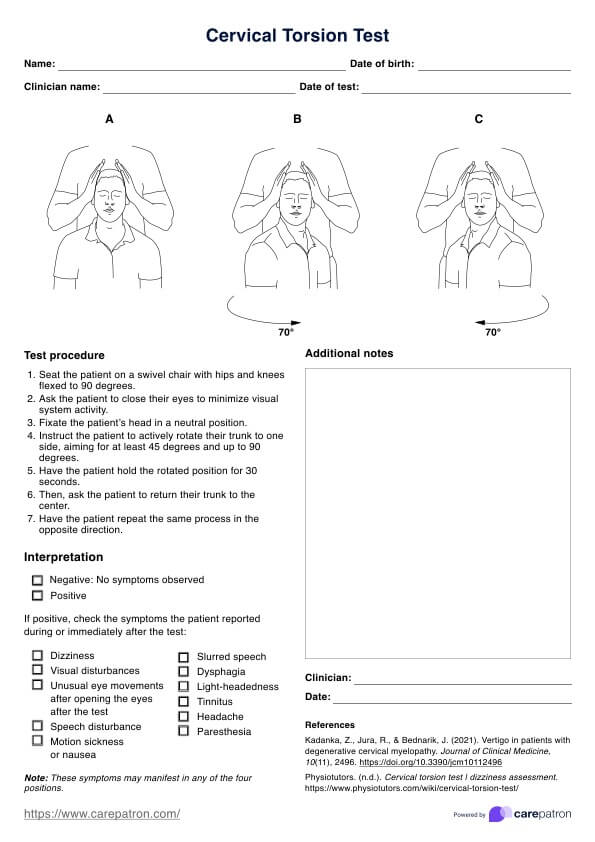The most common cause of cervicogenic dizziness is a dysfunction in the cervical spine, which may stem from whiplash, cervical spondylosis, or other forms of neck injury or disorder that affect the joints, muscles, or nerves.

Cervical Torsion Test
Learn how to perform the Cervical Torsion Test. Get a free PDF template to streamline your documentation today!
Cervical Torsion Test Template
Commonly asked questions
The cervical neck torsion test for cervicogenic dizziness involves the examiner passively rotating the patient's head to full range. In contrast, the patient is seated upright to determine if this movement provokes dizziness, indicating a cervical origin of the symptoms.
The duration for cervical vertigo to resolve can vary widely; it might take a few weeks to several months, depending on the underlying cause, the effectiveness of the treatment, and the patient's adherence to a rehabilitation program.
EHR and practice management software
Get started for free
*No credit card required
Free
$0/usd
Unlimited clients
Telehealth
1GB of storage
Client portal text
Automated billing and online payments











